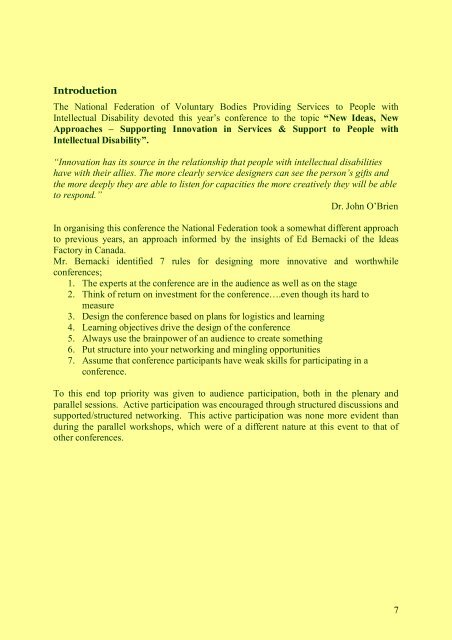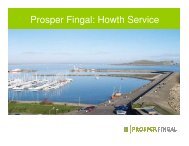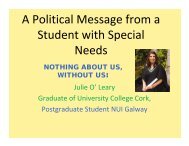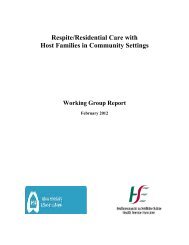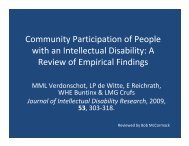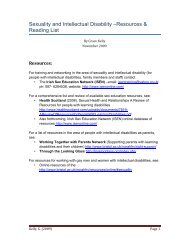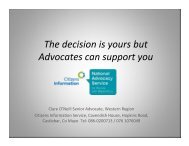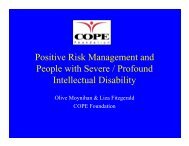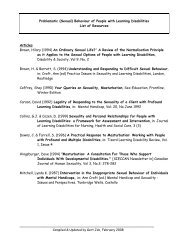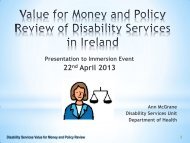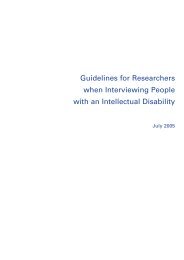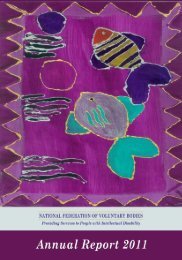Conference Proceedings Report - Final Draft - National Federation ...
Conference Proceedings Report - Final Draft - National Federation ...
Conference Proceedings Report - Final Draft - National Federation ...
You also want an ePaper? Increase the reach of your titles
YUMPU automatically turns print PDFs into web optimized ePapers that Google loves.
Introduction<br />
The <strong>National</strong> <strong>Federation</strong> of Voluntary Bodies Providing Services to People with<br />
Intellectual Disability devoted this year’s conference to the topic “New Ideas, New<br />
Approaches – Supporting Innovation in Services & Support to People with<br />
Intellectual Disability”.<br />
“Innovation has its source in the relationship that people with intellectual disabilities<br />
have with their allies. The more clearly service designers can see the person’s gifts and<br />
the more deeply they are able to listen for capacities the more creatively they will be able<br />
to respond.”<br />
Dr. John O’Brien<br />
In organising this conference the <strong>National</strong> <strong>Federation</strong> took a somewhat different approach<br />
to previous years, an approach informed by the insights of Ed Bernacki of the Ideas<br />
Factory in Canada.<br />
Mr. Bernacki identified 7 rules for designing more innovative and worthwhile<br />
conferences;<br />
1. The experts at the conference are in the audience as well as on the stage<br />
2. Think of return on investment for the conference….even though its hard to<br />
measure<br />
3. Design the conference based on plans for logistics and learning<br />
4. Learning objectives drive the design of the conference<br />
5. Always use the brainpower of an audience to create something<br />
6. Put structure into your networking and mingling opportunities<br />
7. Assume that conference participants have weak skills for participating in a<br />
conference.<br />
To this end top priority was given to audience participation, both in the plenary and<br />
parallel sessions. Active participation was encouraged through structured discussions and<br />
supported/structured networking. This active participation was none more evident than<br />
during the parallel workshops, which were of a different nature at this event to that of<br />
other conferences.<br />
7


